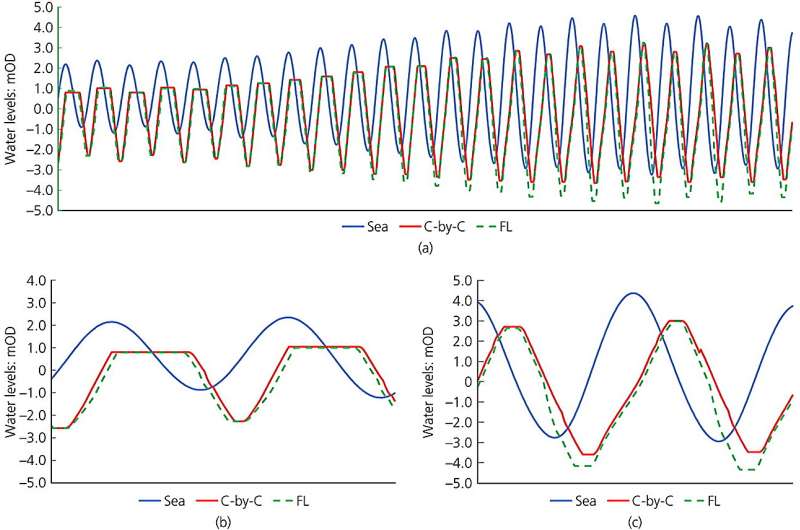
Tidal range schemes can protect estuaries and coastal areas from the effects of sea level rise according to a new study by Lancaster researchers.
David Vandercruyssen, Simon Baker, David Howard, and George Aggidis from the School of Engineering say that tidal range schemes are vital to protect habitats, housing, and businesses from a rising sea level estimated to be over one meter within 80 years.
Postgraduate researcher David Vandercruyssen said, "High tides can be limited to existing levels simply by closing sluices and turbines and existing low tide levels can be maintained by pumping."
Professor George Aggidis, Head of Energy Engineering, said, "Development of estuarine barrages has been hampered by misconceptions about their operation and fears of disturbance of the ecologically sensitive intertidal areas."
"Our studies show that with modern technology and operating procedures, estuarine barrages are the only practical way to protect these vital habitats. Coastal lagoons have also been proposed for several locations around Britain's coast. Schemes will provide jobs in construction and manufacturing for generations to come as well as opportunities for transport, communication, conservation and recreation. In the long-term, they will provide reliable power with reduced costs."
Their research, published in Proceedings of the Institution of Civil Engineers—Energy, follows on from earlier Lancaster University research into a combined tidal range electricity generation and cost model demonstrating the viability of tidal range energy in the UK. This showed how it is possible to maintain the full tidal range within existing dams or weirs.
Professor Aggidis said, "Great Britain has the second largest tidal range in the world, and major barrages have been considered since Victorian times. Globally, two large-scale schemes are currently in operation, La Rance in France, completed in 1967, and Lake Sihwa in South Korea in 2011; both schemes generate significant quantities of cheap, sustainable electricity."
More information: David Vandercruyssen et al, Tidal range electricity generation into the twenty-second century, Proceedings of the Institution of Civil Engineers—Energy (2023). DOI: 10.1680/jener.23.00031
Citation: How tidal range electricity generation can protect coastal areas (2024, January 11) retrieved 11 January 2024 from https://techxplore.com/news/2024-01-tidal-range-electricity-generation-coastal.html
This document is subject to copyright. Apart from any fair dealing for the purpose of private study or research, no part may be reproduced without the written permission. The content is provided for information purposes only.
